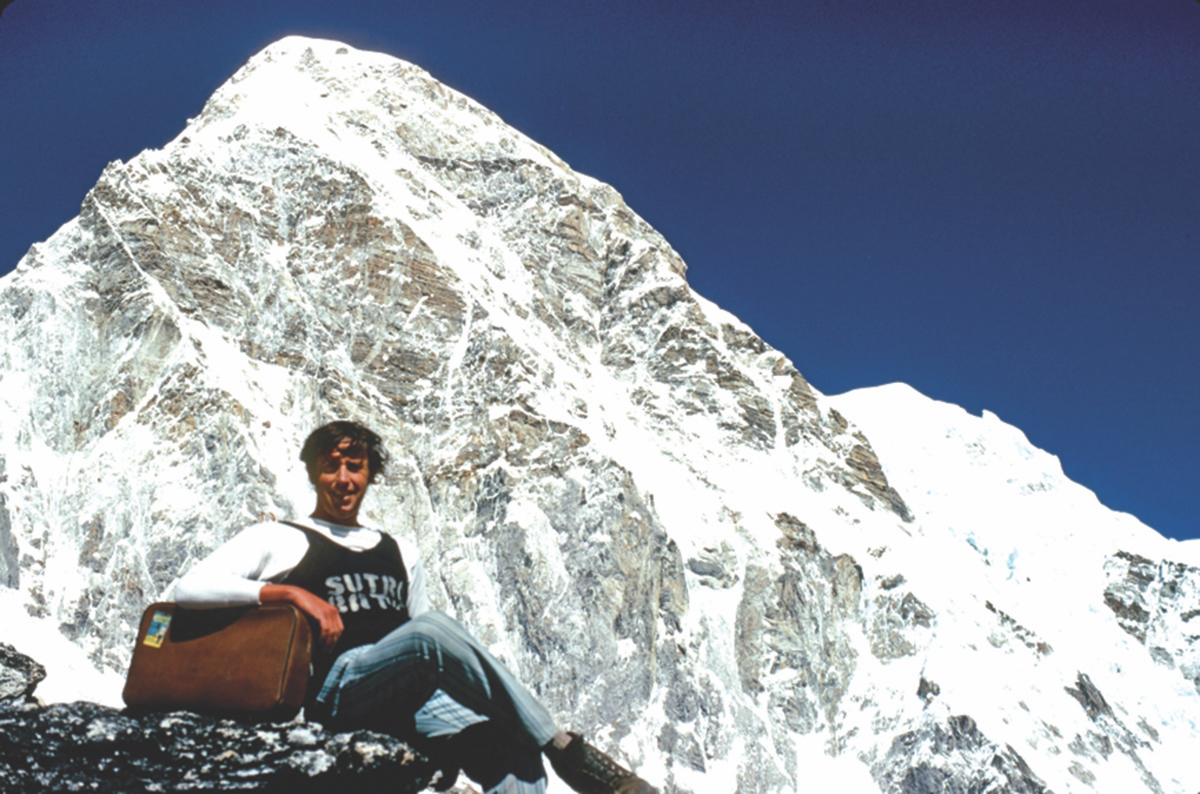Two years after our first trek near Annapurna, my friend and Sierras climbing partner Scot Macbeth and I found ourselves hiking up the mountainside from the tiny Lukla Airport toward P. K.’s village, an ancient trading center known as Namche Bazaar.
We had been eager after that first trip to return to the Himalaya, and especially of course to see Mount Everest with our own eyes because of our new connection with our guide and friend, P.K. The area where most Sherpas live along the main trail northward rising to Everest’s peak is revered by mountaineers around the world as “the Khumbu.” This is part of eastern Nepal’s Solukhumbu District.
As we trekked along the fast-flowing Dudh Kosi River and through the Himalayan forest, we passed small Sherpa huts and villages, each with dome-shaped meditation and worship houses known as gompas. We saw prayer wheels—small cylinders bearing sacred written Buddhist prayers that, when spun, are believed to bring the same benefits as prayers recited orally, and strings of colorful prayer flags rippling and snapping in the breeze.
Himalayan Buddhists believe spiritual beneficences etched on the prayer flags, known as lungtas or “wind horses,” are received by all who are touched by winds that animate the flags. The most important mantra in Buddhism, Om Mani Padme Hum, is a prayer for protection from danger and a call to compassion, “the Jewel in the Heart of the Lotus.”
You see it in Tibetan script adorning prayer flags, prayer wheels, and mani stones—large, smooth stones with this or other mantras etched into the surface—wherever you go in the Himalaya, but especially in the Khumbu. His Holiness the Dalai Lama tells us the mantra is best understood as six syllables embodying Buddha’s teachings on the six realms of existence in suffering.
Near Namche Bazaar, we caught sight of Mount Everest for the first time. Unforgettable. Standing along a ridge above the village, we could see verdant forests and gorges carved several thousand feet into steep canyons below. Above us, Everest’s peak loomed regally on the north horizon; closer at hand were the soaring, snow-covered peaks of Thamserku, Kangtega, Ama Dablam, and Lhotse, the world’s fourth-highest mountain at nearly twenty-eight thousand feet. We were awestruck.
Sherpa guides and porters were vital to the success of the early Western explorers in the Himalaya. Their mountaineering skills and genetic advantage in tolerating extreme altitudes are emblematic traits of the Sherpa culture. So is their adaptability.
This ethnic group originally migrated from eastern Tibet—the name in Tibetan literally means “people of the east”—several hundred years ago through what is known as the Nangpa La, a pass at an elevation of more than nineteen thousand feet into Solukhumbu. They share the Tibetan heritage in language, clothing, and Tibetan Buddhism.
The highest mountain was named Everest by the British in 1865 to honor Sir George Everest, the Welsh surveyor and geographer who oversaw Britain’s 19th century charting of India that discovered the peak in Nepal. For centuries the mountain has been known as Chomolungma, “Mother Goddess of the World,” in Tibetan and “Sagarmatha” among Nepalis.
Pictured: Richard Blum, 1972.


Leave a Reply